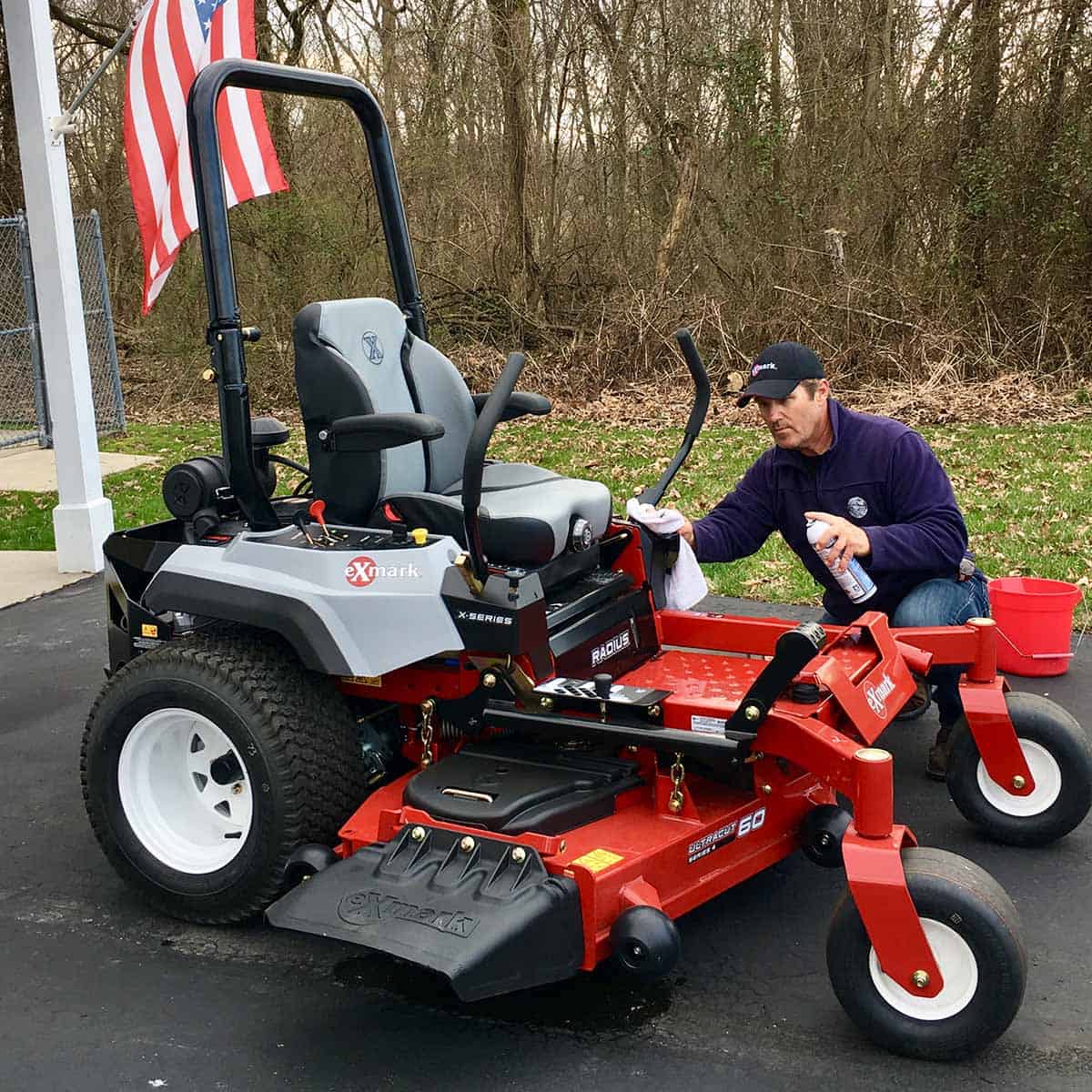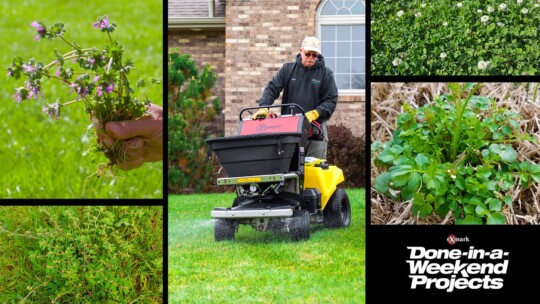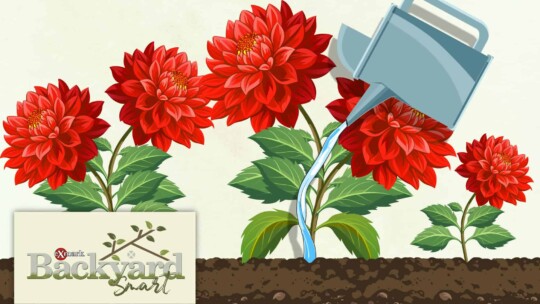Lawn care isn’t easy, but true lawn warriors know how important it is to keep up with those essential tasks throughout the year. That’s why we’ve created this comprehensive lawn care guide.
An important factor in lawn care is the season. The season affects the care approach required for your lawn. This lawn care guide is split up by season, so you can easily jump to the proper season and quickly see what care is needed.
Table of Contents
Another huge factor to keep in mind with seasonal lawn care is the variety of grass you have. There are two varieties: cool-season and warm-season grasses. The most popular cool-season grasses are bluegrass, perennial ryegrass, tall fescue, and fine fescue. The most popular warm-season grasses are Bahia, common Bermuda, hybrid Bermuda, centipede, and zoysia. Depending on the sort of grass you have, your care will be a little different, but we’ll be sure to address that throughout this lawn care guide.
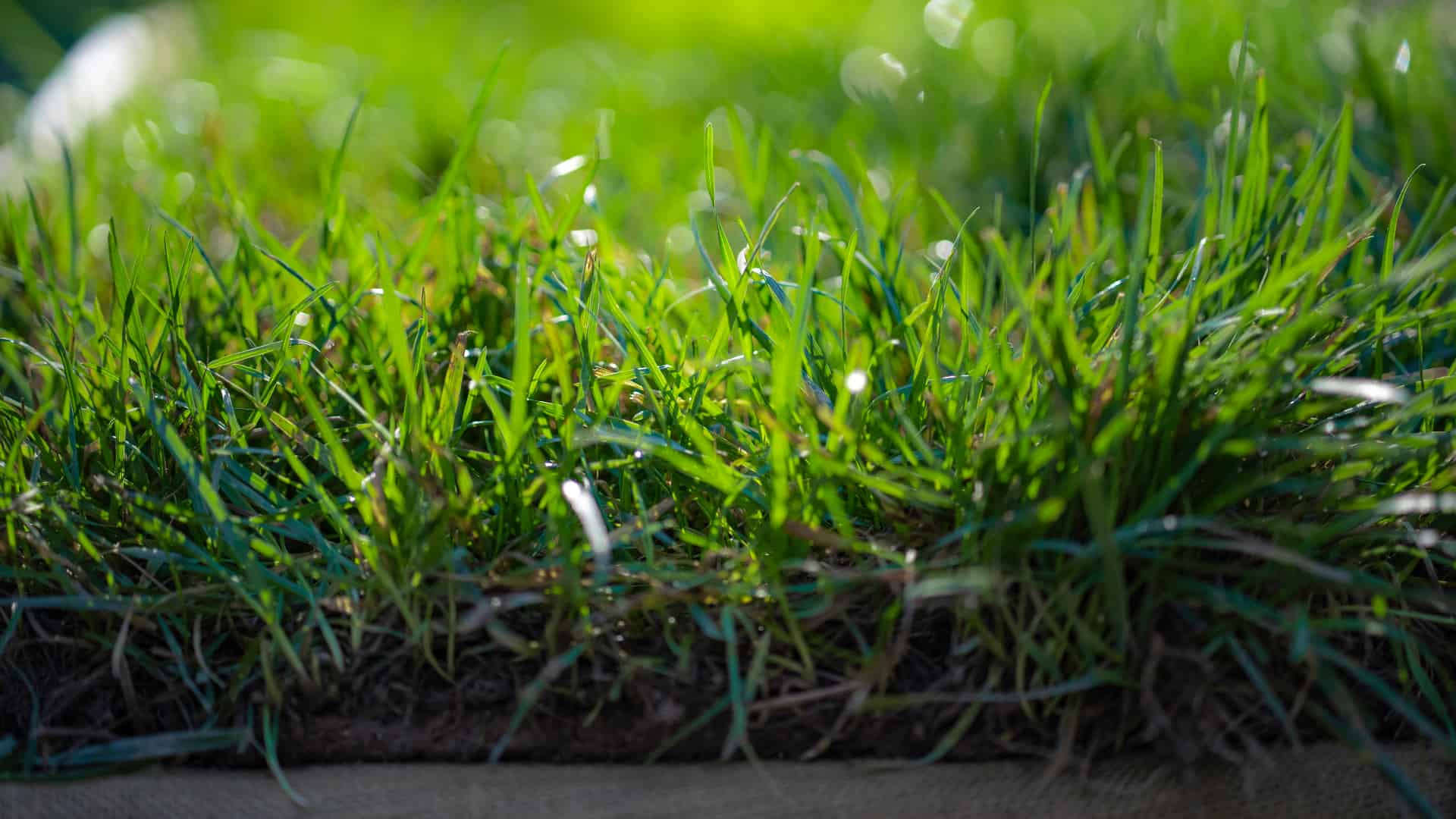
RECOMMENDED VIDEO
Grass 101: How To Choose The Best Grass Type
Looking for the perfect backyard grass? Look no further—we’ve done the legwork for you!
Spring Lawn Care Guide
The winter months have come to an end. It’s crucial that you care for your lawn during this time to ensure it’s healthy and strong throughout the year. A lot of the season tends to focus on cleanup, whether that’s trimming, weeding, patching, or just general pickup, but those steps are all essential to a lush and beautiful lawn! Be sure to visit this section of our lawn care guide frequently throughout the spring.
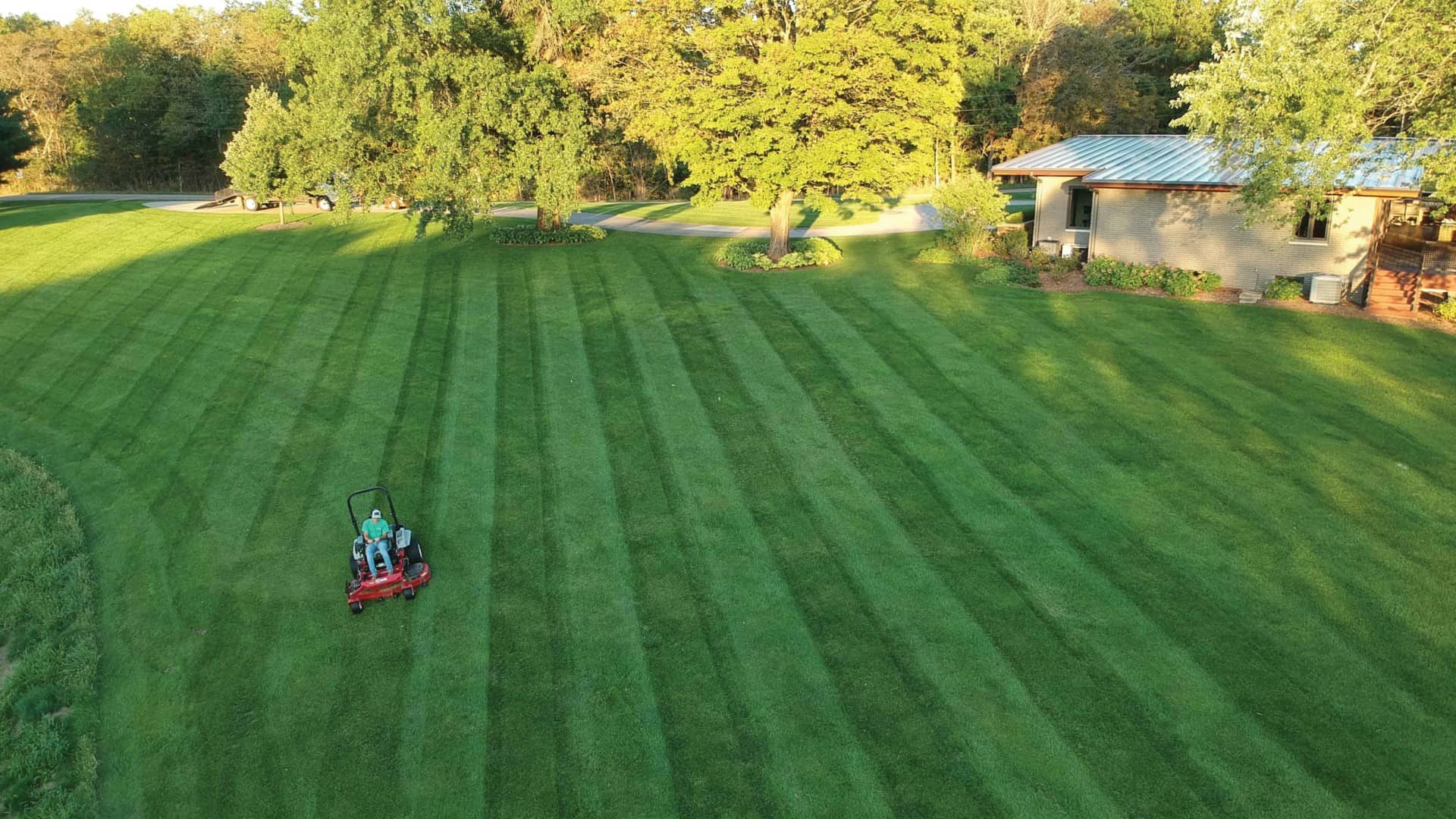
Spring Aeration
If you’re new to lawn care, you might be wondering, is lawn aeration really necessary? The goal of aeration is to improve oxygen, nutrient, and water uptake by your lawn’s roots. If you aerate and then fertilize, it will make fertilizing more effective. Aerating in the spring takes advantage of the grass’s natural growth cycle, delivering even more nutrients and oxygen when plants may need it most. Spring, with its cool temps and plentiful rain, is an ideal time for aerating cool-season grasses. Likewise, late spring and early summer are ideal times for aerating warm-season grasses.
Mow two or three times to be sure the grass is growing fast enough to take advantage of increased air exchange in the root zone. This will also give you a better idea of how healthy your lawn is and whether you should overseed after aerating. Experts recommend you aerate and overseed for cool-season grasses at least once per year. For warm-season grasses, you want to top dress with sand. For lawns with heavily compacted soil or high clay content, aerating twice a year may be best.
Check out this video for tips and tricks on lawn aeration.
Spring Weeding
If you want to prevent weeds from growing in your lawn this spring, you should think beyond using a pre-emergent. (It’s important to note that understanding how to combat weeds in your lawn begins with knowing what grass species is best suited for your area.) It’s essential that as soon as weeds start to appear, you remove them before they go to seed and spread.
Crabgrass is a common weed that can be a challenge to deal with. It’s best to keep an eye out for it in the spring. The sooner you notice it and pull it up, the easier it will be to control and eradicate. A broad-leaf herbicide is the best solution for a large plot of land if weeds begin to take over. If your lawn is particularly weedy, wash your mower blades and deck after you mow. Seeds can cling to the mower; starting up and mowing the next time returns them to your lawn.
Spring Seeds
Any lawn can develop low spots, uneven patches, and bare spots. Whether they’re caused by erosion or the ground settling around pipes or other installations, they can typically be resolved by top-dressing. For cool-season grasses, reseeding is most effective in early spring when cooler air temperatures and warmer soil temperatures promote growth. For warm-season grasses, you’ll want to top dress in the summer.
If you have cool-season grass and your lawn is in need of overseeding, doing it after aeration will provide fresh growth, and give it a fuller, thicker appearance. Overseed when there’s abundant rain and sunshine. You’ll also want to be past the last frost date, as frost will kill tender young roots. Overseeding can set your lawn up for success later in the season, as a thick, healthy lawn will be better able to withstand summer stresses. No need to do this for warm-season grasses.
Spring Fertilizing
When choosing a lawn fertilizer to promote lush green grass, pick a fertilizer with a higher first number—or nitrogen proportion. Fertilize your lawn, trees, and shrubs in early spring, then again in early fall. Annuals should be nourished during their growing season. Committing to a regular fertilization regimen will also aid in lawn growth and health. Fertilizer also helps balance soil pH, which leads to fewer weeds.
Spring Mowing
Springtime means you can bring your Exmark mower back out and put it to use! But before you mow you should answer a few questions which can be found here. Once you determine whether or not it’s time to mow, consider things like what to do with lawn clippings, mower mistakes to avoid, and even lawn striping (how to and what it is). Be sure to refer to this section of the lawn care guide throughout the spring so you can keep track of all that needs to be done!

Summer Lawn Care
Next up in our lawn care guide is summer.
The months are getting warmer, and everyone’s spending more time outside. You’re probably hosting plenty of outdoor activities and events, so you definitely want to spend a good chunk of time working on your lawn this season.
Summer Watering
Did you know that there are specifications about both how long and how often you should water your lawn? Well, now you know! When considering what the right amount of water is, you need to take into consideration both regional and seasonal issues that can impact your growth. Not every lawn will follow the same watering and maintenance pattern. It’s best to tailor a schedule that works for you. But there are a few basics to know: water needs will vary depending on the type of grass in your lawn and the current weather patterns. As a rule, morning is the best time to water your lawn. Generally speaking, you’ll want to water your lawn deeply and thoroughly to create a healthy root system. Watering too quickly—or not deep enough—can shorten your grass roots and make them more prone to injury.
If you’re worried about over or under-watering your lawn, check out this article about lawn irrigation.
Summer Brown Spots
Lawn diseases and spots might be something you come across during the summer months. Lawn diseases like gray leaf or dollar spot can happen for a variety of reasons like poor watering habits, incorrect mower settings, or compacted soil. Each disease has its own solution, but it’s essential that you keep an eye out for signs of disease so you can nip it in the bud. If you’re dealing with bare spots, don’t worry! There are a few steps to the process, one of them being aerating your soil, but repairing bare spots requires reseeding; a fairly easy process.
Warm-season grasses should be top-dressed in the summer. For cool-season grasses, top dressing is also a good time to add organic matter to your soil. This is done in the late summer or early fall. You can buy a high-quality top-dressing mixture at your garden center or make your own. If you’re top-dressing the entire lawn rather than a few problem areas, it’s a good idea to aerate beforehand. This will help the organic matter work its way into the soil, reduce compaction, and provide channels for air and water to reach the roots.
Summer Weeding
Throughout the summer, you’ll need to continue carrying out the weeding work from the spring. You’ll want to keep an eye out for invasive species, like Kudzu or Japanese Honeysuckle, as they tend to make themselves known during the warmer months. To manage these species, you can use either mechanical control (digging and pulling) or chemical control (herbicides) throughout the summer.
Summer Mowing
As you’re already aware, mowing happens in every season except winter! You’ll need to keep up with regular mows to ensure the health and growth of your grass. It’s important to establish a plan for your grass clippings and your mower maintenance throughout the summer. Make sure to keep your mower clean while it’s in use for the season. You should also ensure your blades are properly sharpened. Finally, when you’re thinking about summer mowing, you need to ensure that your mower settings are correct for the season. This will differ based on the type of grass you have and what the temperature is like.

General Summer Lawn Care To-Do
There are a few things to keep in mind during your summer lawn care that don’t quite fit into any category but are important nonetheless.
- Lawn pests can become a problem during the summer. Creatures like grubs, rodents, grasshoppers, and Chinch bugs can make your lawn their home. Keep an eye on any signs of pests so you can avoid letting them overrun your grass.
- Summer is a great time to work on edging your lawn. Edging should be done around anything with a border; flower beds, sidewalks, driveways, etc. This ensures you have a gorgeous-looking outdoor space with crisp, clean lines. When you see your grass begin to grow out towards your sidewalks, you’ll know it’s time to pull out the string trimmer and get to work. Edging is especially important for warm-season grasses as they grow and spread laterally.
Fall Lawn Care
Check out this section of the lawn care guide for all you need to know about fall care.
The weather is cooling back down, but the backyard activities aren’t over yet! Football season is around the corner and there are plenty of bonfires still to be had. While the yard work is winding down, your lawn still needs a few more months of care and attention before the chilly winter weather sets in.
Fall Aeration
For cool-season grasses, fall is a great time to aerate your lawn. Aerating while your grass is still growing will help it to maintain health and vitality and even bounce back in the spring. In fact, the only time you should aerate any type of grass is while it’s growing and at the peak of its health. Whether you aerate in the spring or fall depends on turf type and geography. No matter when you do it, aerating at least once a year provides a number of benefits to your lawn.
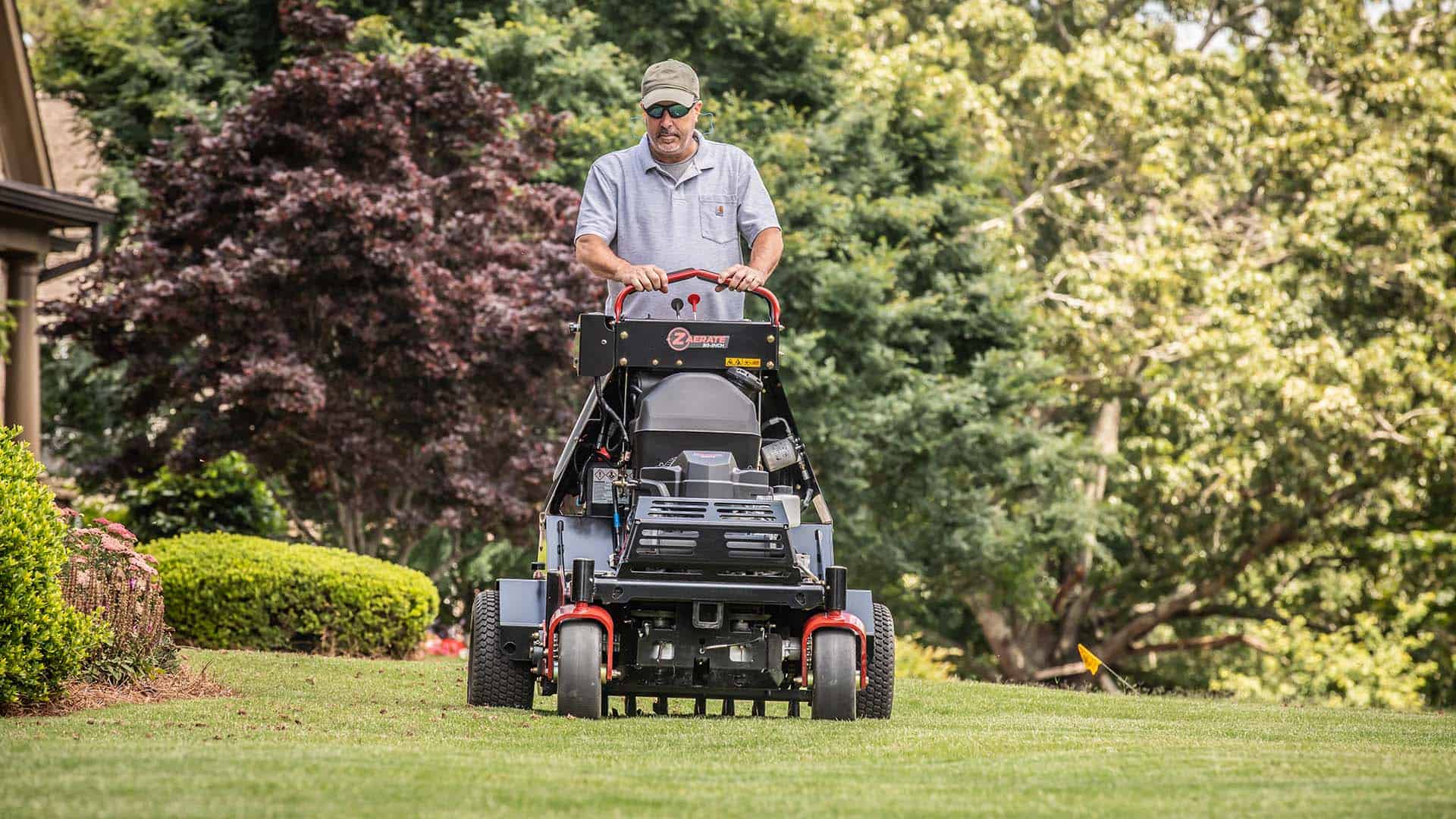
Fall Seeding
If you have cool-season grass, the best time to overseed is in the fall when the temperatures are cooler but before the ground gets too cold. You might wonder why you should overseed. Cool-season grasses, in particular, don’t have root systems that regenerate. During the summertime when it’s hot, you’re going to lose a bit of turf.
Fall Leaves
When you’re a kid, one of the best things are fall leaves. You can rake them into a giant pile and throw yourself in all day. As an adult, however, they’re a little less fun as they’re time-consuming and can damage your lawn if not properly cared for. If you don’t want to waste time bagging up your leaves, repurpose them after all your hard raking work. Allow them to dry out a little more to make incredible mulch for your garden or landscaping. However, if you regularly fertilize your lawn, you might want to skip mulching the leaves. You can bag them instead as sometimes it can be too much of a good thing.
Fall Prep
There’s not just fall work to be done! There’s also spring work that you should start on during the fall season. You’ll want to be sure to fight those potential spring weeds by laying down some pre-emergent.
Fall Mowing
This is your last season of mowing for the year, so take advantage of it! This is a great time to lean in and make sure your lawn is ready to lay dormant for the winter season. You’ll want to be sure to lower your mower height as the temperature lowers to help prevent fungus. And, there’s crucial winter prep that needs to be done! Be sure to prepare your mower for the cool weather that’s coming. There are several steps to take to winterize your mower. Winterizing ensures it’s working properly and ready to go as soon as the weather warms up!
Winter Lawn Care
It might be the end of the year and the mowing season, but there are still plenty of things you can do to keep busy in your outdoor space. This lawn care guide has you covered with suggestions and tips!
Winter Planning
There’s no better time to plan for your outdoor space in the winter. However, there are a few things to consider for the warmer weather to come. Your lawn may be covered with snow, but now’s the time to start landscape planning. Whether you have bare patches to fill or are planning a new design, starting now’ll ensure the lawn you want.
You might also want to consider the configuration of grass you’ll be maintaining. This will help you to determine how you might want to place raised, or in-ground, beds, as well as any décor or patio spaces. By creating a mower-friendly lawn as part of your overall landscape design, you can realize a beautiful backyard space—and a lawn that’s quicker and easier to cut!
Or maybe you’re looking to create a lawn that is more drought-tolerant, you should start thinking about that now, too. And it’s always important to consider how you can get a professional-looking lawn.
Winter Maintenance
Not only should you consider planning during the winter, you should also consider maintenance. Your tools and mower will need a little help to get through the cold months and back into the spring. And while you’re working on the maintenance of your mower, you might consider upgrading. Now’s the time to do some good research!


